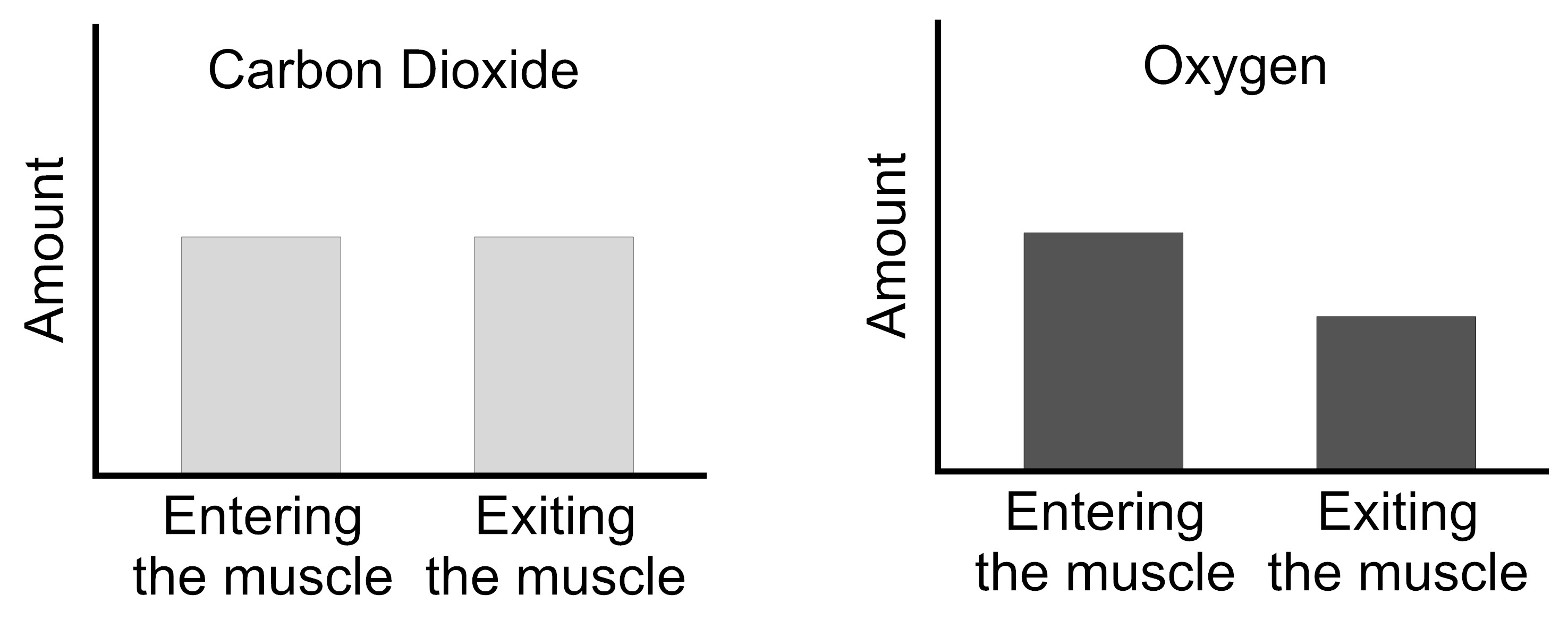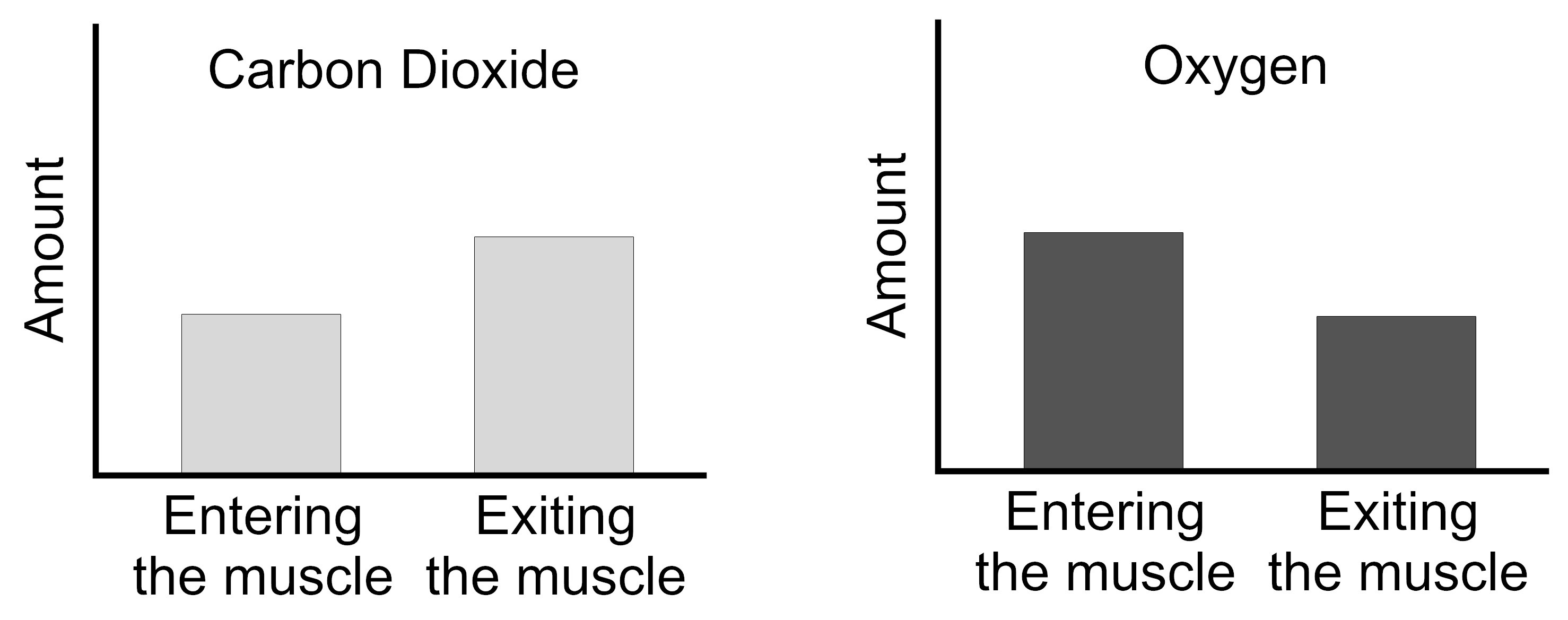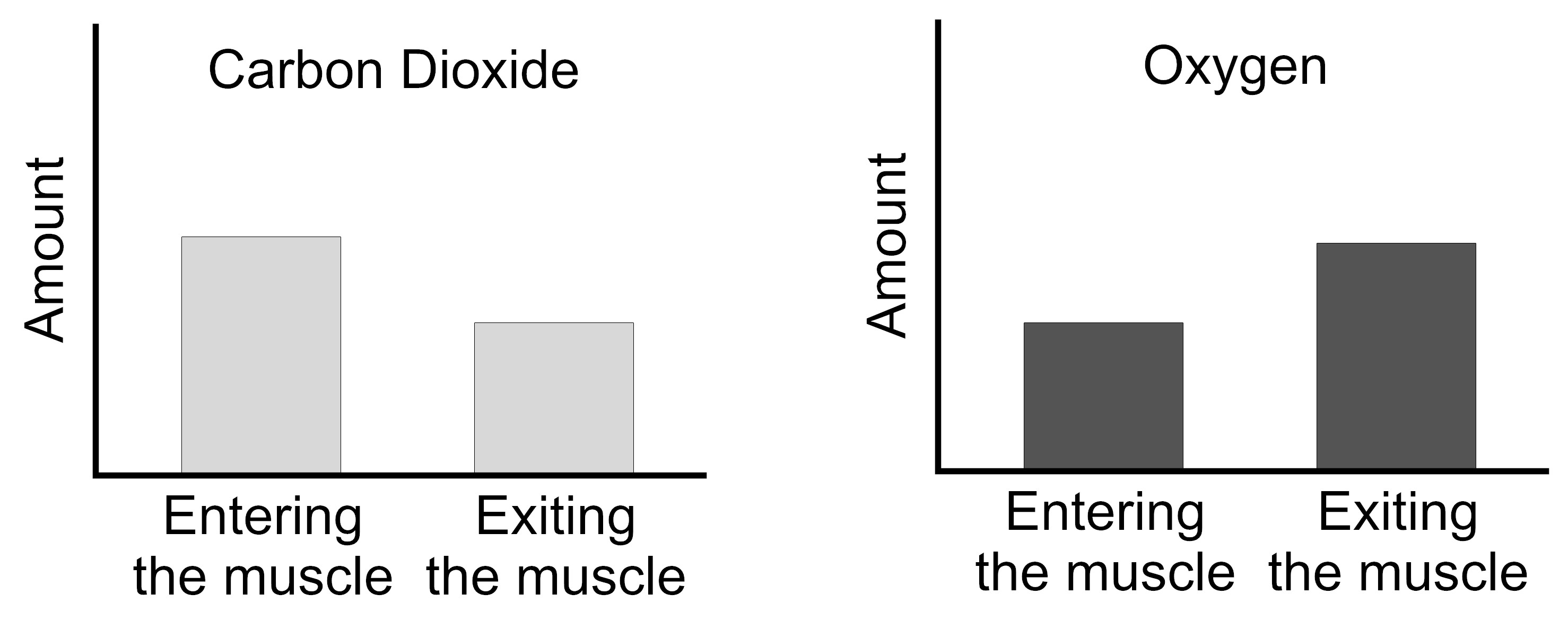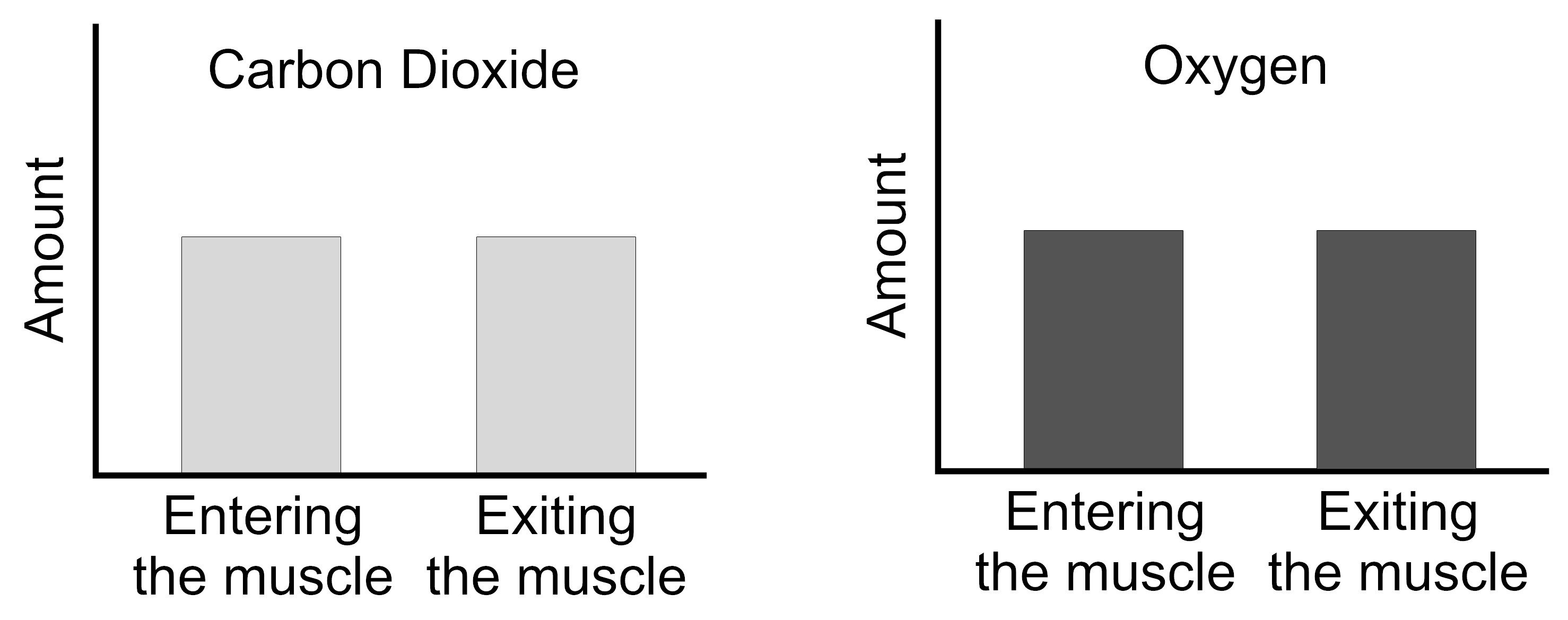Item EB072002: The amount of carbon dioxide is less in blood vessels entering muscles than in blood vessels exiting muscles, whereas the amount of oxygen is great in blood vessels entering muscles than in blood vessels exiting muscles.
The diagram below shows the blood flow entering and exiting a muscle. The blood vessels entering the muscle are red and the blood vessels exiting the muscle are blue.
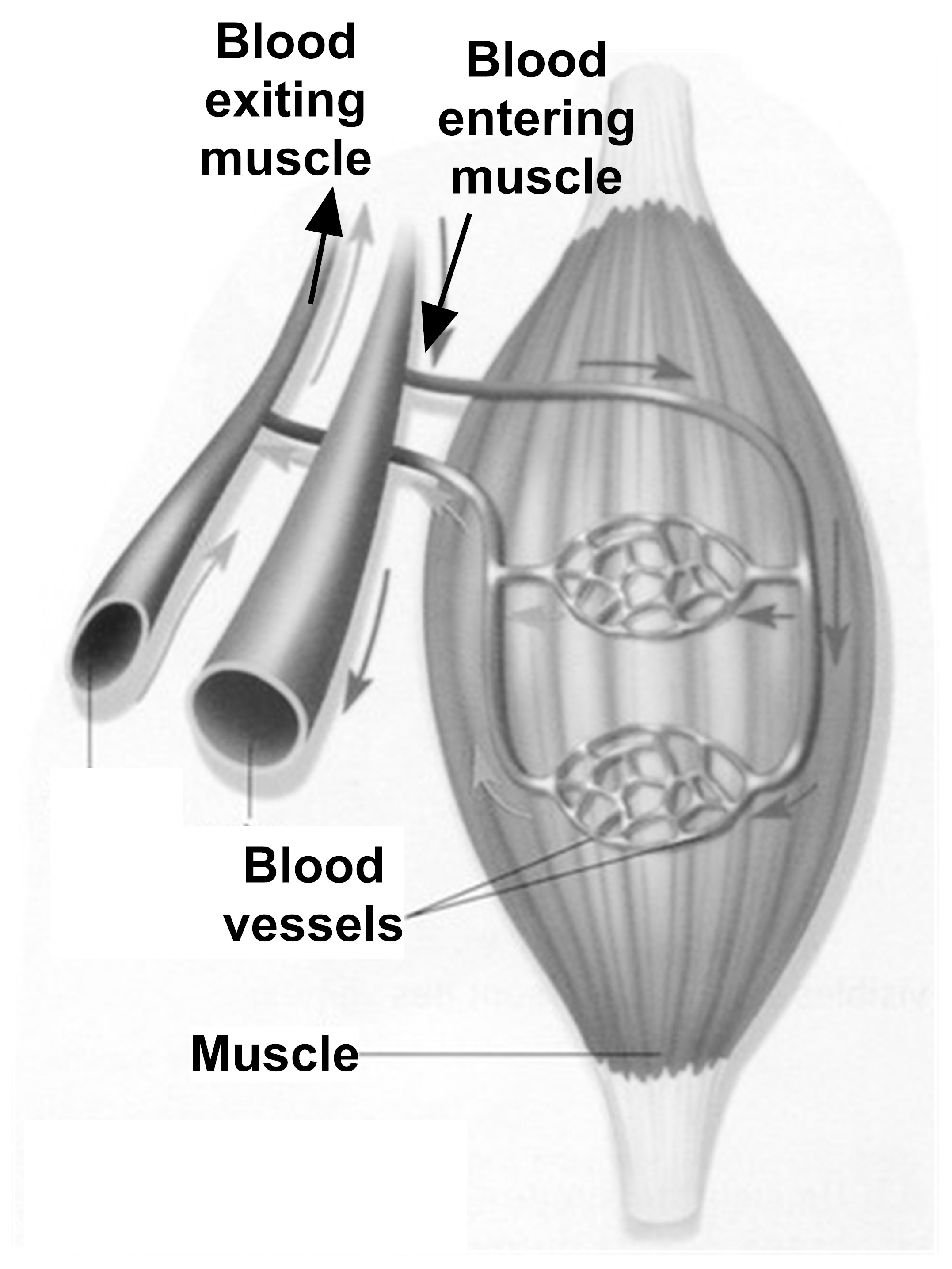
Which of the following pairs of graphs represents the amount of carbon dioxide and the amount of oxygen in the blood vessels entering and exiting an exercising muscle?
- Distribution of Responses

- Points Earned
| Group | Correct | Total | Percent |
|---|---|---|---|
| Overall | 69 | 176 | 39% |
| Grades | |||
| 6–8 | N/A | N/A | N/A |
| 9–12 | 64 | 162 | 40% |
| Gender | |||
| Male | 30 | 89 | 34% |
| Female | 32 | 70 | 46% |
| Primary Language | |||
| English | 61 | 155 | 39% |
| Other | 3 | 8 | 38% |
- Distribution of Responses

- Points Earned
| Group | Correct | Total | Percent |
|---|---|---|---|
| Overall | 102 | 175 | 58% |
| Grades | |||
| 6–8 | N/A | N/A | N/A |
| 9–12 | 98 | 163 | 60% |
| Gender | |||
| Male | 61 | 101 | 60% |
| Female | 34 | 57 | 60% |
| Primary Language | |||
| English | 88 | 147 | 60% |
| Other | 6 | 13 | 46% |
- Disciplinary Core Ideas
- PS3.D Cellular respiration in plants and animals involve chemical reactions with oxygen that release stored energy. In these processes, complex molecules containing carbon react with oxygen to produce carbon dioxide and other materials.
LS1.A In multicellular organisms, the body is a system of multiple interacting subsystems. These subsystems are groups of cells that work together to form tissues and organs that are specialized for particular body functions.
LS1.A Multicellular organisms have a hierarchical structural organization, in which any one system is made up of numerous parts and is itself a component of the next level.
LS1.C As a result of these chemical reactions, energy is transferred from one system of interacting molecules to another. Cellular respiration is a chemical process in which the bonds of food molecules and oxygen molecules are broken and new compounds are formed that can transport energy to muscles. Cellular respiration also releases the energy needed to maintain body temperature despite ongoing energy transfer to the surrounding environment.


